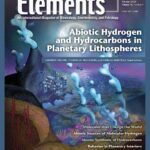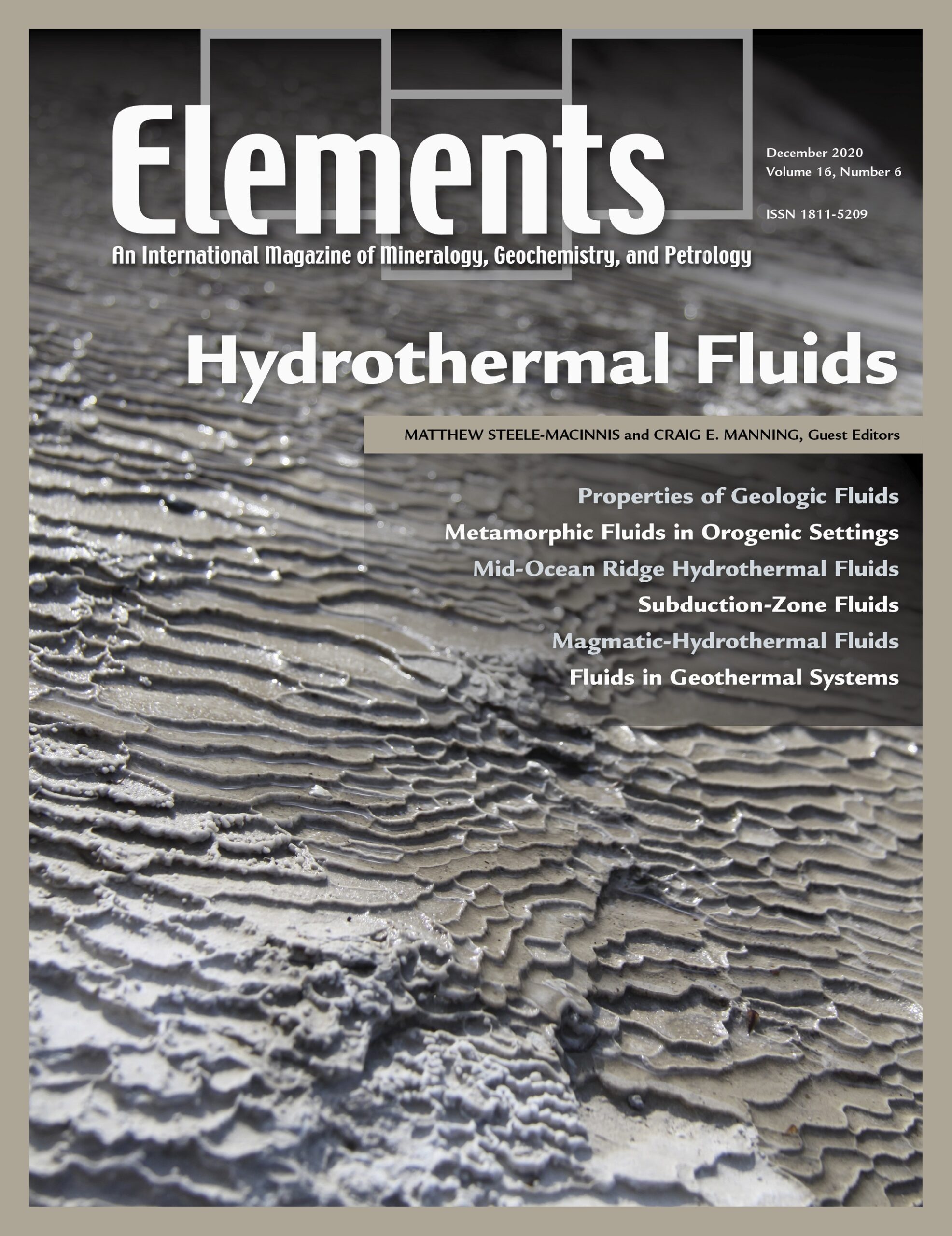
Abiotic Hydrogen And Hydrocarbons In Planetary Lithospheres, February 2020, Vol. 16, No. 1
June 28, 2024
Shedding Light On The European Alps, February 2021, Vol. 17, No. 1
June 28, 2024Hydrothermal Fluids, December 2020, Vol. 16, No. 6
$20.00
Fluids are one of the principal agents of heat and mass transfer in the Earth. This thematic issue explores the physical and chemical properties of hydrothermal fluids and how they affect geologic processes.
Hydrothermal Fluids
December 2020, Vol. 16, No. 6
Fluids are one of the principal agents of heat and mass transfer in the Earth. This thematic issue explores the physical and chemical properties of hydrothermal fluids and how they affect geologic processes. The issue discusses our current understanding of the nature of hydrothermal fluids across a range of geologic settings; interactions between fluids and rocks; and the interrelationships between fluid-driven processes in different settings. Each chapter highlights both broad and specific overlaps between “normal” and ore-forming hydrothermal fluids, and describe how the features of hydrothermal systems reflect the specific properties of the fluids in each setting.
Why You’ll Love Elements Magazine:
- Expert Contributors: Articles written by renowned researchers in the field of geoscience.
- Engaging Content: Join a community of readers who are passionate about Elements.
- Exceptional Quality: Each issue is printed on high-quality paper with stunning visuals and detailed illustrations that bring complex scientific concepts to life.
Order your copy of the December 2020 issue of Elements magazine today and explore hydrothermal fluids.
Related products
-
Energy: A Geoscience Perspective, June 2007, Vol. 3, No. 3
$20.00The issue of energy resources in the future may be one of the most important in the 21st century. Future climate change and the ways to abate it while still supplying needed energy will impact future political relations, world economics, human health, and the environment.
-
Water On Mars, June 2006, Vol. 2, No. 3
$20.00During the past several decades, spacecraft data have transformed the planets from astronomical objects into geologic worlds. Mars is the current focus of planetary exploration, and NASA’s objectives for this effort are based on the theme, “follow the water.
-
Early Earth, August 2006, Vol. 2, No. 4
$20.00The earliest Earth was a strange inhospitable world, yet transitions occurred culminating in the evolution of life within the first billion years. The preservation of a sparse and ambiguous rock record has encouraged debate.




